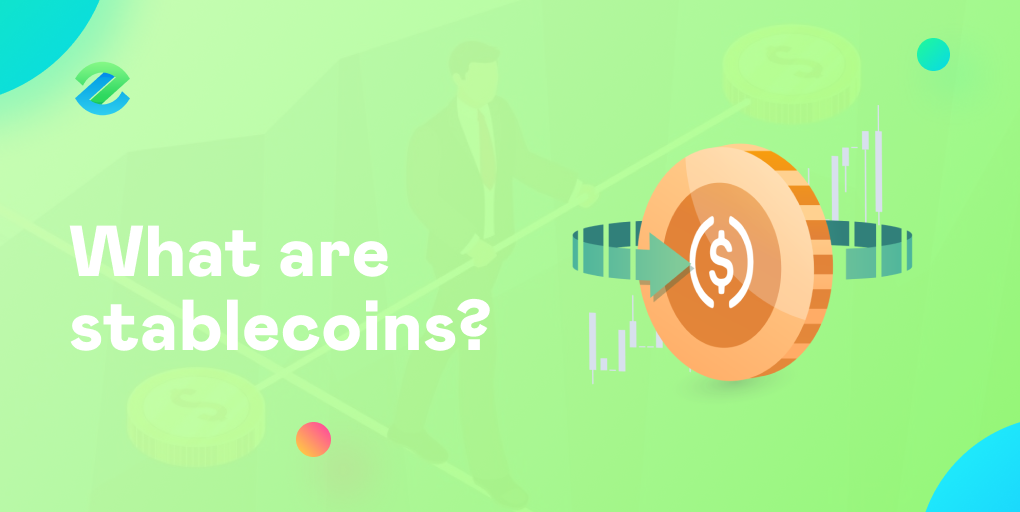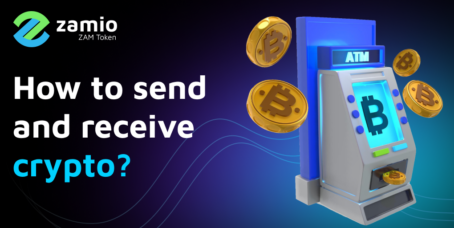The price volatility of cryptocurrencies deters many users, such as investors and companies, from participating in the crypto market. To solve this problem, a type of cryptocurrency, stablecoins, was created.
Unlike other cryptocurrencies, such as bitcoin, stablecoins are backed by an asset to achieve a fixed or relatively stable value. In theory, the stablecoin should always follow the value of its backed asset.
Table of Contents
Stablecoins meaning
Stablecoins are one type of cryptocurrencies usually backed by a physical or digital asset of perceived value. This way, one stablecoin should always equal the value of its backed or collateralized asset.
Types of stablecoins
The most common asset classes used to back the value of stablecoins are fiat currencies, commodities, cryptocurrencies, and more are emerging.
Fiat collateralized stablecoins
Fiat collateralized stablecoins are the most common type but the most centralized. They are backed by a national fiat currency using a 1:1 ratio. The two most common collateralized national currencies are the US dollar and the euro. For example, a stablecoin pegged to the US dollar will always equal one dollar, at least in theory.
The issuer of the stablecoin holds the collateral in real bank accounts. The issuer must deposit one dollar for each stablecoin it issues. When the holder redeems stablecoins for dollars (one for one), the issuer removes the redeemed stablecoins from the circulating supply. This way, if deposits are managed in good faith, the stablecoin should always maintain a one-to-one ratio.
A central entity, usually a company, manages the funds. As a result, this type of stabelcoins loses its decentralized features in the decentralized crypto space, making it less attractive for those who despise and don’t trust centralized financial entities.
Furthermore, since fiat-backed stablecoins are centralized and kept in the custody of a third party, authorities could access and confiscate the funds for any illegal wrongdoing by the managed third party. In decentralized space, this is not possible, as we shall see in the upcoming types of stablecoins.
Examples of US dollar-backed stablecoins include USDT, USDC, and BUSD. Euro-backed include EURS, EBASE, and EUROX.
Commodity collateralized stablecoins
This type of stablecoins is backed by commodities or real-world resources. The most popular collateralized commodities are precious metals, mainly gold. A stablecoin backed by gold will maintain its price according to the price of gold, either per gram or ounce. For example, one gram of gold should always equal one stablecoin.
This approach requires the issuer to hold gold reserves to maintain a one-to-one ratio (one gram of gold for one stable). It is a more complex centralized approach. Like fiat-backed stablecoins, holders must trust the issuer to keep 100% gold reserves at all times.
Another drawback of using gold is that it is subject to price volatility. An investor looking to sell his gold reserves in dollars or exchange his stablecoin for cryptocurrency could receive more or less for his trade depending on the price movement of gold.
Examples of gold collateralized stablecoins include XAUT and PAXG.
Crypto-collateralized stablecoins
This type is the most decentralized and complex. It solves the risks associated with centralized stablecoins, but it has its drawbacks.
Crypto-backed stablecoins use other cryptocurrencies with a high market cap, such as bitcoin, as collateral. Stablecoins in this category are more decentralized than both commodity and fiat-backed stablecoins because everything is conducted on the blockchain without third-party involvement via decentralized autonomous organizations and applications running on smart contracts.
Crypto-backed stablecoins require users to lock their crypto collateral into a smart contract which will then mint a fixed amount of stablecoins. This process is automatized and does not require a third party like a bank or company to maintain the crypto collateral reserves and the value of the stablecoin.
MakerDAO, which runs on the Ethereum blockchain, is one of the most successful and impressive examples of Decentralized Autonomous Organizations (DAO). The MakerDAO uses DAI, a decentralized application to mint the decentralized stablecoin DAI. Decentralized stablecoins backed by cryptos should always equal one USD dollar.
Since crypto-collateralized stablecoins are stored in the blockchain, they enjoy all the features of blockchain technology. However, since this type is managed by coded smart contracts, any bugs found in the smart contract code could allow hackers to steal funds.
Non-collateralized stablecoins
Instead of using an asset as collateral, this type uses an algorithmically governed approach to control the supply and demand of stablecoins. Such coins rely on smart contracts to buy tokens if the price falls and sell tokens if the price increases.
The main objective of the algorithm-based smart contract is to get the coin’s price as close as possible to one US dollar. This process is also automatized and does not require collateral or a third party like a bank or company to maintain a fairly fixed value.
The role of stablecoins
The main purpose of introducing stablecoins to the crypto market is to hedge against sharp price movement. During such times, investors can convert their unbacked fiat cryptocurrencies, such as bitcoin and ether, to stablecoins. The price of stablecoin remains constant despite market price movements, hence the name stable. The stability of a stablecoin depends on its type and the quality of its reserves.
Since stablecoins are part of the crypto ecosystem, investors don’t have to completely exit the market by converting their crypto assets to fiat currency. Stablecoins provide a perceived safe haven for investors until they identify a comfortable or opportunistic re-entry point to crypto markets.
Investors now can simply convert their fiat-backed stablecoins to traditional assets, such as gold and fiat currency. So, stablecoins bridge traditional money (fiat) with digital currencies (crypto).
Stable coins can also be used as payment as much as bitcoin. Since the price of stablecoins is fairly fixed and predictable, companies would be more willing to accept them as a form of payment.









